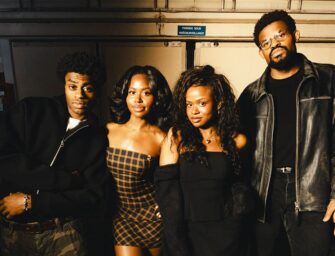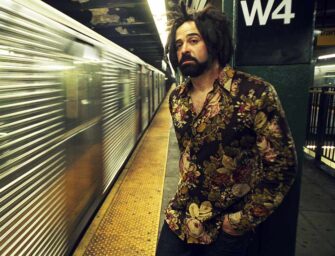
Nicky Holland: “My fascination with harmony is definitely a thread that runs through most of my songs.”
We recently caught up with a songwriter whose resume includes Tears For Fears, John Hughes and a successful solo career
This May, Legacy Recordings, the catalog division of Sony Music Entertainment, released Nicky Holland’s Nobody’s Girl. Drawing together the solo recordings of the gifted singer/songwriter/pianist/composer/arranger, the record features songs from her self-titled debut LP and sophomore LP Sense and Sensuality, along with her cover of the Burt Bacharach-Hal David song I Just Don’t Know What To Do With Myself.
Along with her solo recordings, Holland has worked with some huge names in the music and film industry. This has seen her record with Tears For Fears, Fun Boy Three and created scores for John Hughes films.
We caught up with Holland and asked her to reveal some of the secrets of her success as a songwriter. Here’s what she had to say…
What made you decide to become a songwriter?
“I was twelve when I first heard Carole King’s Tapestry in a dance class at school. After listening to it multiple times, I realized I could play by ear, and I learned to play all the songs on the album. This then led to me writing my first song Waiting For The Train, that same year. From that time onwards, I spent all of my spare time writing and co-writing. The songs I wrote during my teens were like little exorcisms, spilling secrets.”
Which songwriters inspired and inspire you?
“Singer-songwriters Carole King, Randy Newman, Donald Fagen, Rickie Lee Jones and Tom Waits. Also, bands like Talk Talk and The Blue Nile.”
In July you released Nobody’s Girl. What’s your favourite song from the record and why?
“Ladykiller is probably my favorite song on Nobody’s Girl. I love the juxtaposition of Lloyd Cole’s gritty lyric of lost innocence, set in New York’s Lower East Side, against the swinging, jazzy, upbeat soundtrack.”
You’ve said that you’re an “arranger and love texture and density.” How do you think this helps your songwriting?
“I don’t know if being an arranger necessarily helps my songwriting at all! My fascination with harmony is definitely a thread that runs through most of my songs and I have always valued it as much as melody.”
If you had to choose, what would you say that the most important thing about songwriting is: the storytelling or the composition?
“When I first started writing, I paid more attention to the music, and collaborated with lyricists. Over the years, I have learned to value the importance of great lyrics and now feel comfortable writing both music and words. A song is a vehicle for a singer to make a connection with an audience, so it is impossible to separate the component parts, and say one is more important than the other.”
Alongside your solo work, your resume includes some impressive names (Tears For Fears, Fun Boy Three and creating scores for John Hughes films). Do you find it easier to write as a solo artist, or with/for others?
“I love to collaborate, and finding the right writing partner/chemistry always makes it feel easier. I stay more objective when I’m writing for other people. The songs on Nobody’s Girl were all written or co-written by me for me, with the exceptions of I Just Don’t Know What To Do With Myself, from the My Best Friend’s Wedding soundtrack and Hat Full of Stars, which I wrote with Cyndi Lauper for her fourth studio album. I also later recorded it for my second album Sense and Sensuality as I felt such a connection to it.”

Nicky Holland: “I know we have something when it is evident an emotional connection has been made.”
Do you employ different techniques when writing for yourself than you do when writing for others?
“If I’m co-writing with the artist, I know we have something when it is evident an emotional connection has been made. If it’s song for me, I tend to rely on how it makes me feel when I sing it.”
How did you get the opportunity to write for such impressive names and what tips do you have for our songwriters who would like to do the same?
“After I graduated from university in 1981, I became one-third of The Ravishing Beauties, with classmates Virginia Astley and Kate St. John. We toured Britain with Teardrop Explodes, and got a lot of attention from the press, playing rock and classical venues. One thing led to another, and when we broke up, Fun Boy Three reached out to me as they had just finished working with Bananarama.
“While working with Fun Boy Three on a television show in Germany, I met Roland Orzabal from Tears For Fears, who was a fan of the Ravishing Beauties. That meeting then led to us working together a year or so later. I guess my advice to songwriters now would be to do what you love and stay active. Don’t let other people make the rules for you – make your own rules.”
Tell us about your work with Fun Boy Three
“Fun Boy Three reached out to me to work on their version of George Gershwin’s Summertime in 1982. I sang on it, played the piano and arranged the strings, and later promoted it with them, on television and in the video. After it became a top 20 hit in the UK, they asked me to work on their new album Waiting.
“I became their musical director, arranging their songs and writing the chords, and helped them put together a six woman band to accompany them. Produced by Talking Heads’ David Byrne, Waiting became a hit all over Europe, and we toured there and in the US, throughout 1983.”
Tell us about your work with Tears For Fears
“After I parted company with Fun Boy Three, I started working with a band on Phonogram, The Escape, led by frontman Alan Griffiths. Label mates of Tears For Fears, we were asked to open for them on their British tour, promoting their first album, The Hurting. Several months later, TFF asked me to work with them while they were making Songs From The Big Chair, but I declined as I was in the studio with The Escape. That project eventually petered out, and the next time they approached me, they sent me Everybody Wants To Rule The World. I was blown away, and immediately agreed to accompany them on their world tour, which ended up lasting the best part of a year.
“During that tour, Roland and I started writing during sound checks and continued to do so back in London, when we got back home. Five of the six songs we wrote ended up on their Seeds Of Love album, and I played piano and keyboards, sang and arranged strings on those songs. The sixth, The Rhythm Of Life, was recorded by Oleta Adams, for her debut album Circle Of One.”

Nicky Holland: “They [Tears For Fears] sent me Everybody Wants To Rule The World. I was blown away.”
Tell us about creating scores for John Hughes films
“John Hughes wrote many of his scripts while listening to pop music of the time. His favorite instrument was the baritone saxophone, which he thought was great to underscore comic scenes. When he sent me cues that needed scoring, they often had ‘temp score’ over them, musical extracts that conveyed the mood he wanted.
“I remember the first cue he sent, a close up on a priest’s smile, from She’s Having A Baby, with the instructions to make it come across as menacing. I had precisely seventeen seconds in which to achieve this. I sent him roughs of my ideas done on my Kurzweil Expander, and eventually, after completing a number of cues, I went to LA and recorded at Paramount studios with a fifty-five piece orchestra. The orchestra, led by a conductor, played to picture, following flashes across the screen. It was one of the most exhilarating sessions I ever took part in.”
We’re huge fans of John Hughes, what’s your favourite film by him?
“My favourite film by John Hughes is The Breakfast Club.”
Us too!
Having released Nobody’s Girl, do you have any plans to release any new solo compositions?
“As of now, I don’t have any plans to release any new solo compositions. However, I am currently working on a new project with Rebecca Roubion, called Clementine. We call it Porch Music, barefoot toe-tapping tunes with the sun going down and probably some brown liquor involved. I also have a single I co-wrote called Coming In, by Contessa, a project by Polina Goudieva.”
If that wasn’t quite enough, below we have the video for her brilliant song, New York Inside My Head. The track was co-written with former songwriting cover star and XTC legend, Andy Partridge. Enjoy!



































Related Articles